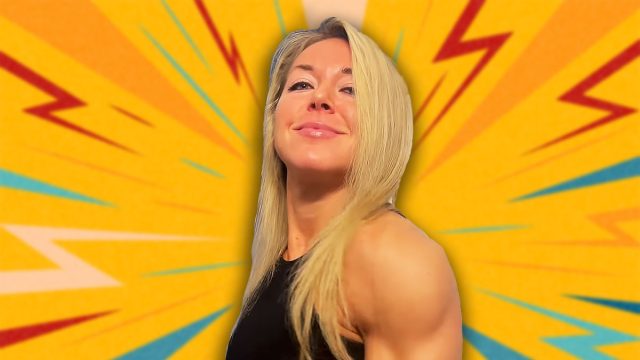The #1 Mistake Keeping You From Toning Up, According to a Fitness Expert

Are you dieting and exercising but can't seem to tone up? According to an expert, you could be making a very common mistake. Stacey Marino is a fitness and nutrition coach who helps people "shed fat, build muscle, and keep their results for life." In a new social media post, she recalls a misstep many people make while trying to shape up. "This one mistake is killing your toned look," she writes.
The Mistake? You Aren't Eating Before You Lift
"Want to look toned? Eat before you lift. Period. One of the fastest ways to look softer, not stronger, is training on an empty stomach. Here's why fasted training works against your goals," she writes.
Lower Strength Output
One reason why lifting without eating is a bad idea? "No fuel = low energy = weaker lifts = less muscle growth," she says.
Muscle Breakdown
Also, your body is forced to steal energy from your muscles when there is no food to fuel it. "When you train fasted—especially in a calorie deficit—your body breaks down muscle for energy. Less muscle = less shape," she says
Increased Cortisol = More Belly Fat
Next, when you don't eat, it can impact your hormones. "Fasted training can spike cortisol, which impacts recovery, sleep, digestion, and fat storage (especially around the belly)," she says.
What To Do Instead
So what should you do instead? "Eat a proper meal 60–90 minutes before training. Focus on carbs + protein (low in fat) for quick energy and muscle support," she writes. According to clinical trials, consuming more protein than the recommended dietary allowance not only reduces body weight (BW), but also enhances body composition by decreasing fat mass while preserving fat-free mass (FFM) in both low-calorie and standard-calorie diets.
Here Are Some Food Ideas
"If you're training early in the morning and don't have much time to eat, try one of these light, fast-digesting options," she recommends.
• ½ your usual breakfast
• A banana + scoop of protein
• Low-fat Greek yogurt + honey or berries
• Protein shake + a small piece of fruit
Bottom Line
"Fueling your body = lifting stronger, recovering faster, and seeing better results. This is one of the most overlooked keys to looking toned—and feeling good doing it," she explains. And if you enjoyed this article, don't miss these 8 High-Protein Foods with Nearly Zero Calories That Melt Fat.




